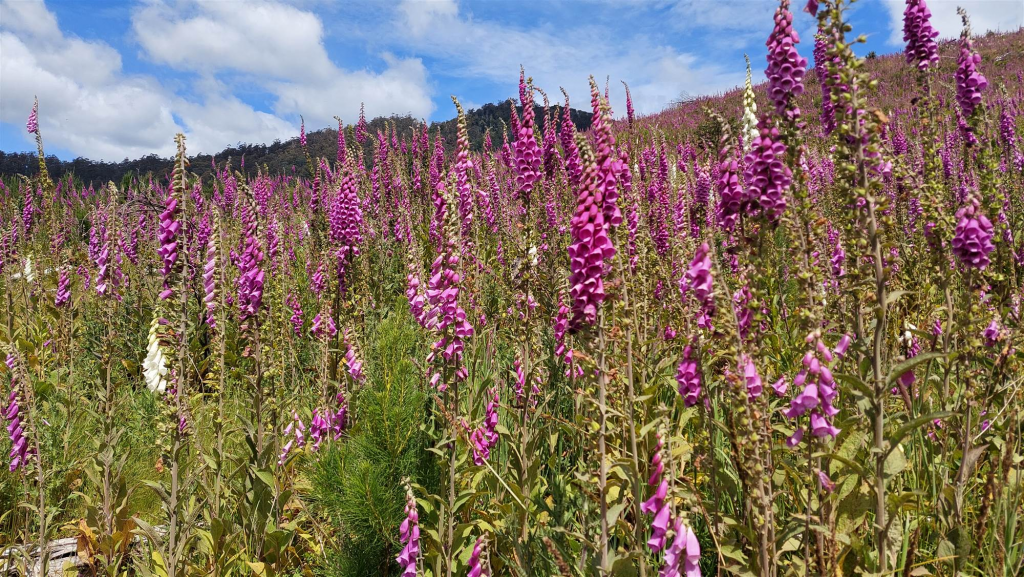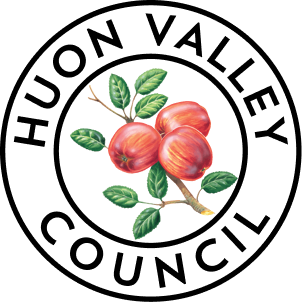
In February 2025 Foxgloves were officially listed as a declared weed under Tasmania’s Biosecurity Act 2019. This means that the importation, sale, and distribution of foxgloves in Tasmania is now prohibited, and property owners in priority areas may have a legal obligation to manage foxglove that grows on their land. The declaration applies to all non-sterile species, varieties, and cultivars of foxgloves (Digitalis species).
What is it and what does it look like?
- Foxgloves are tall biennial or perennial herbs growing up to 2 m in height.
- Plants have a single flower stalk covered in bell-shaped flowers 4-6 cm long with spots inside. Common foxglove (D. purpurea) has dark purple spots inside each flower.
- The softly hairy leaves are oval shaped, 10-30 cm long with a pointed tip and a winged stalk.
Flowers bloom over spring and summer.
All parts of the foxglove plant are toxic to humans and animals and care should be taken to avoid contact between the skin and any plant material. If any part of the plant is ingested, immediately call the Poisons Information Centre on 131 126.
What is Council doing about foxglove?
Foxglove is widespread across the Huon Valley, so eradication is not a realistic aim. Over the next few seasons, Council’s NRM Team will work with the Tasmania Parks and Wildlife Service and other organisations to map foxglove occurrences and identify priority areas for management, with the aim of preventing the spread of foxglove into important places like the Tasmanian Wilderness World Heritage Area.
You can help by recording sitings of foxglove using the iNaturalist app.
For more information about the foxglove declaration, including access to an interactive map showing the designated areas for Foxglove management, visit Foxglove (Digitalis) | Department of Natural Resources and Environment Tasmania.

